Explore Valletta as Queen Elizabeth II would! (Part 2)
Valletta, the European Capital of Culture 2018 and UNESCO World Heritage site, is a tourist must-see city in Malta. There is a lot to explore and Valletta Commonwealth Walkway is highlighting 20 points of interest in a systematic walk around the capital. Here is the second part of walkway for you to enjoy.
11. Victoria Gate
Let’s start the second part of Valletta Commonwealth Walkway with Victoria Gate. This is the only original gate within the fortification of Valletta that survived until today. All the other gates were demolished and the City Gate was rebuilt in 2014 to a modern unrecognizable design. As you might have guessed it already, this gate was dedicated and named after Queen Victoria. The foundation stone was laid in 1884 and opened the year after. The gate consists of two arches for cars to pass and two smaller passages for pedestrians. You can find the Victoria Gate just underneath the Grand Harbour Hotel in Valletta. Here is the exact location.
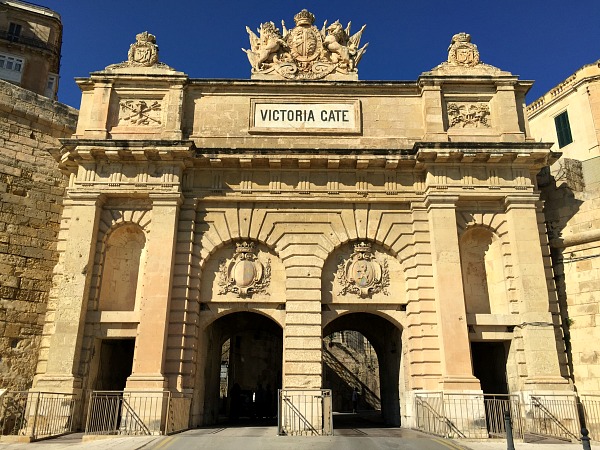
12. Upper Barrakka Gardens
Upper Barrakka Gardens, just like Lower Barrakka Gardens offers outstanding views of the Grand Harbour and the Three Cities. You can find this gorgeous garden just next to Auberge de Castille, which is our next stop. It is the perfect place to rest your feet after a full day of sightseeing. Also don’t miss out the gun shot at noon which takes place at the Saluting Battery located just below the gardens. Once you here I would also highly recommend to visit the Lascaris War Rooms, no. 1 attraction in Valletta by TripAdvisor!

13. Auberge de Castille
Welcome to the Prime Minister’s office! Auberge de Castille has been the office of the Prime Minister since 1972 holding the Cabinets meetings every Tuesday. This is one of seven auberges in the capital city, standing at the highest point of Valletta. The first version was built between 1571 and 1574, then rebuilt between 1741 and 1745 and after that completely restored between 2009 and 2014 with the square in front of the Castille Palace getting a face lift in 2015. It is also worth mentioning that from 1805 the Auberge was the Headquarters of the British Armed Forces in Malta!
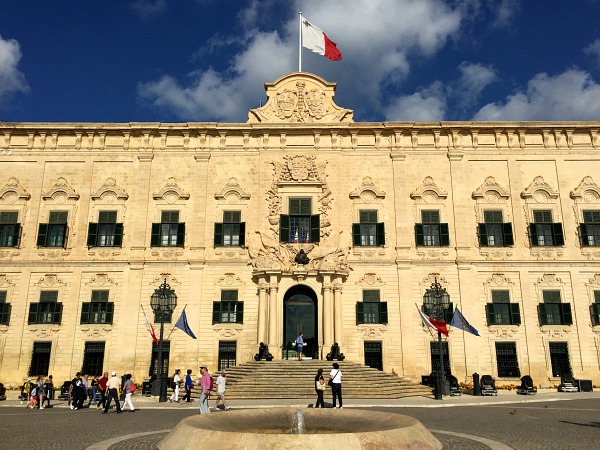
14. Statue of Jean Parisot de Vallette
On the way from Auberge de Castille (stop 13) to the National Museum of Archeology (stop 15) you will come across the statue of Jean Parisot de Vallette. As you may already know, Jean Parisot de Vallette was a French noble man and the hero of the Great Siege of 1565. He served as 49th Grand Master of the Order of Malta and founded Malta’s capital city. Jean Parisot de Vallette laid foundation stone for Valletta on the 28th March 1566. He died two years after in 1568 and is buried in the crypt of Saint John’s Co-Cathedral.

15. National Archeological Museum
The next point of interest, which Valletta Commonwealth Walkway takes us to, is the National Archeological Museum. The museum originally opened as the National Museum in 1958. It is housed in another auberge building (stop 13), Auberge de Provence, which was built in the baroque style in 1751 by Glormu Cassar.
This museum gives a good introduction to the pre-history of Malta. Its permanent collection includes artifacts dating back to Neolithic period. I would definitely highlight the Sleeping Lady and Venus of Malta from the Bronze Age. When visiting the museum check out the Grand Salon on the first floor, which was originally used by Knights of Malta as banqueting hall and presently hosts temporary exhibitions.

16. St John’s Co-Cathedral
St John’s Co-Cathedral is arguably the most visited attraction of the capital city. It is No. 2 of things to do by TripAdvisor, straight after the War Rooms. The Co-Cathedral was built by the Knights of Malta between 1573 and 1578. It was designed by Glormu Cassar and even though the exterior is severe and ordinary, the interior that was heavily gilded by Mattia Pretti will blow your mind! But that I’ll leave for you to explore, below you can see the entrance to the Co-Cathedral.
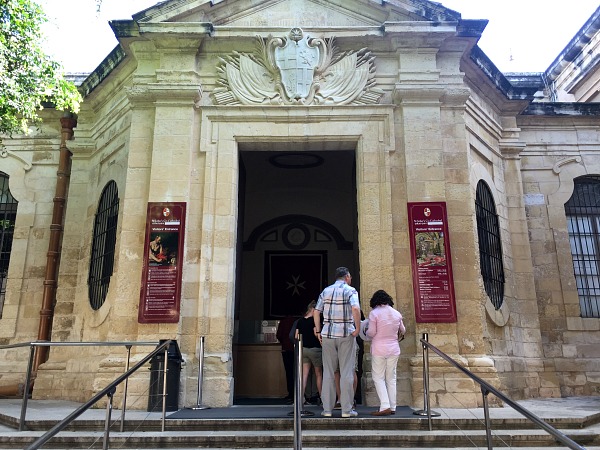
17. Republic Square
Originally called Piazza Tesoreria, Republic Square got its current name after Malta was declared republic in 1974. There is a statue of Queen Victoria in the center of the square, however the dominant feature of the Republic Square is definitely the Biblioteca. The National Library of Malta was designed by the Polish artist, Steffano Ittar, and completed in 1796. The library is open to everyone and you can enter free of charge. If you have some spare time give it a visit! Not a usual place to go, but quite a special one.
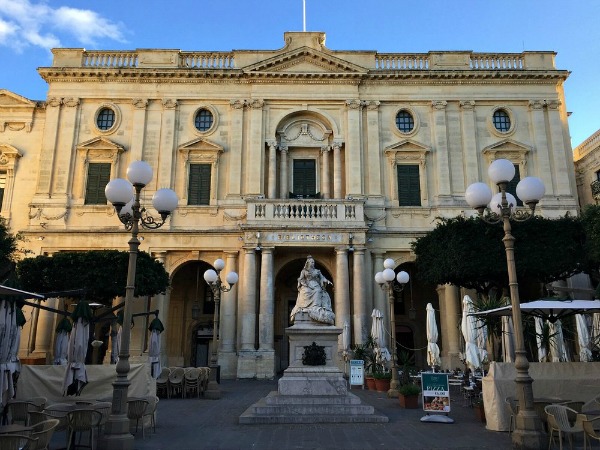
18. Grandmaster’s Palace and Armoury
Welcome to the President’s office! Originally the Auberge d’ Italy also served as the Governor of Malta’s office as well as the Parliament building. Part of the Palace is open to the public as a museum. I’ve visited the Palace and Armoury myself and dedicated an entire blog to this attraction, which you can read here.
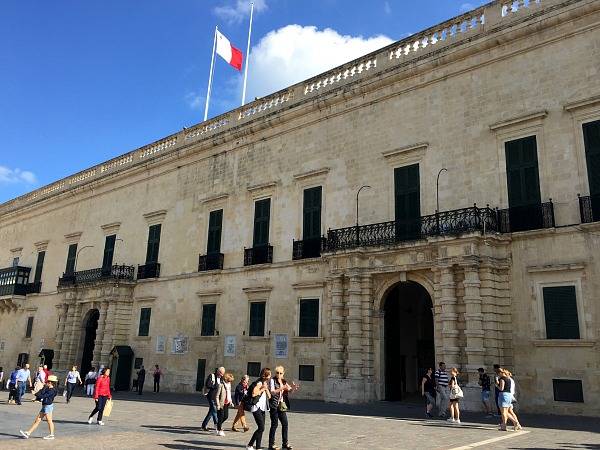
19. Casa Rocca Piccola
This privately owned 16th century palace is a great example of how a noble family used to live in Malta. Even though the current owner Nicholas (9th Baron of Budach and 9thMarquis de Piro b.1941.) lives in the palace until today, some rooms are available to the public to visit and admire. Casa Rocca Piccola was built in 1580 an it is one of the few remaining houses in Valletta which have retained their original style. The palace is open from 10am to 5pm every day except Sundays and Public Holidays with tours taking place on the hour.
And what can you look forward to? During the visit you will see number of rooms, such as the summer dining room, a library, a chapel, two bedrooms, a cabinet room as well as the underground shelters! Definitely worth your time! And once you are here, just cross the street and visit the Toy Museum for another unique experience.

20. The Church of St Paul’s Shipwreck
And this is the last stop of the Valletta Commonwealth Walkway. The Collegiate Parish Church of Saint Paul’s Shipwreck is, believe it or not, one of Malta’s oldest churches. The church was designed by Girolamo Cassar in 1570 and completed 12 years later in 1582. As the name of the church suggests, it commemorates the shipwreck of Saint Paul the Apostle in 60AD.
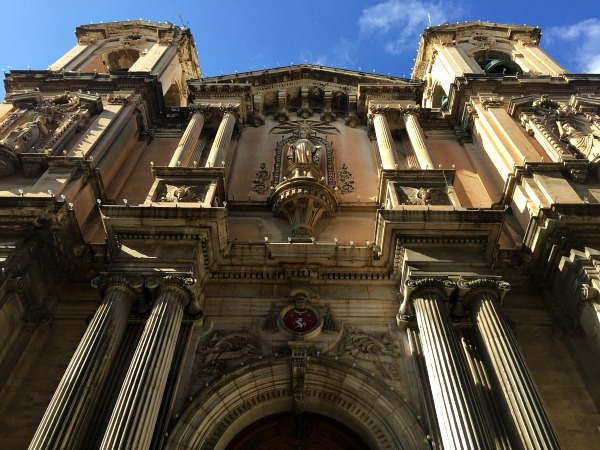
I hope you enjoyed the Valletta Commonwealth Walkway. If you’ve missed the first part of the walk, you can find it here. Next time you’re in Malta’s capital city, you can follow the walkway’s points of interest and explore Valletta in a new, different way. And don’t forget to let me know, which stop was your favourite! 🙂




Ahoy
Not often blogers write about architect who designed Library / Biblitheeca. If so, most say he was Italian or other, thnks for effort to find out his nationality – Polish !
Hi Tomek, thank you for your comment. I always do my best to get my information right and do a good research. Thank you for appreciating my efforts. 🙂